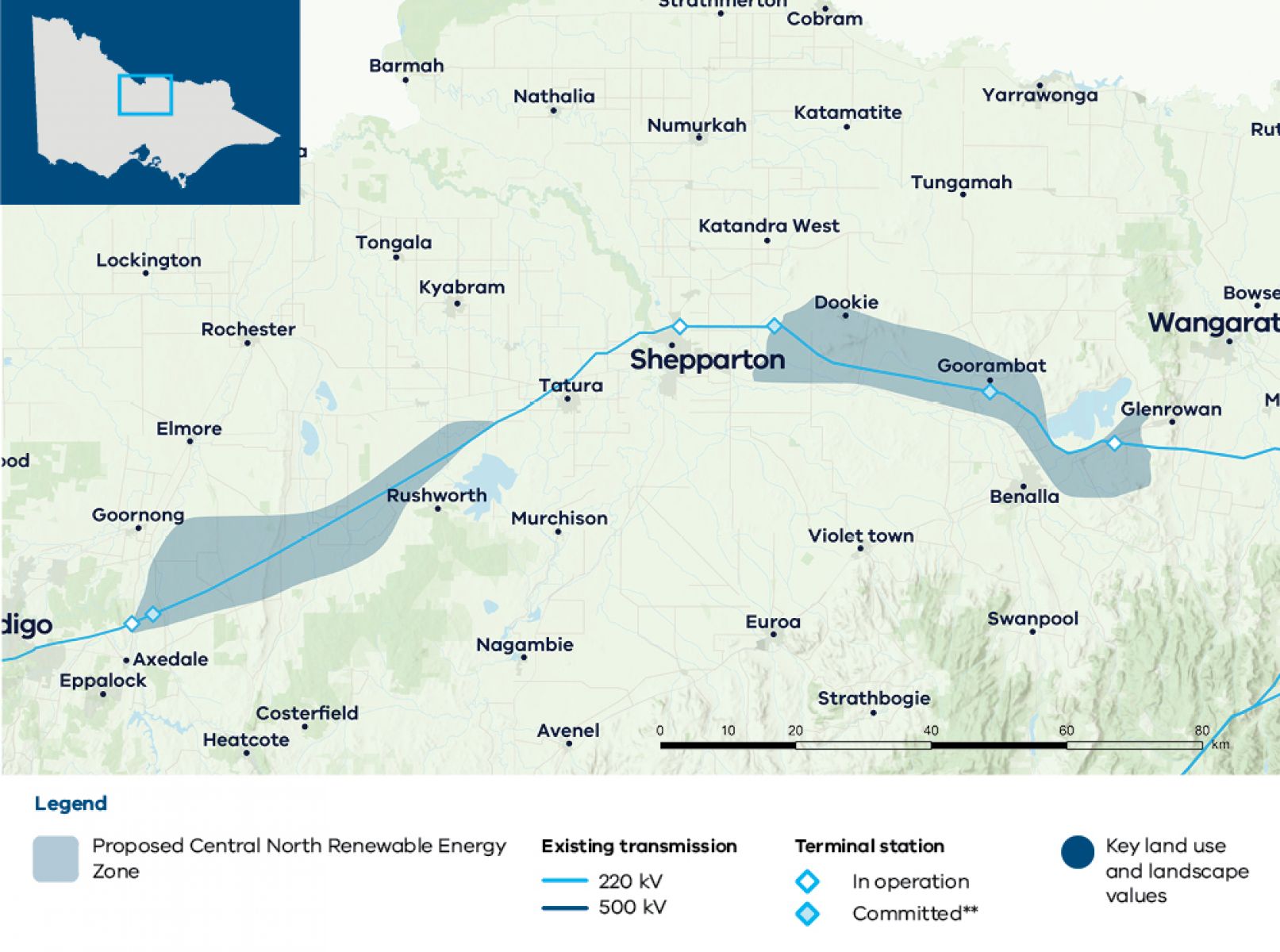On this page:
A renewable energy zone with 2 sections – a western section between Bendigo and Tatura and eastern section between Shepparton and Glenrowan – is proposed as part of the 2025 Victorian Transmission Plan.
Before being officially declared by the Minister for Energy and Resources, there will be a further chance to provide your feedback.
For more information, visit Engage Victoria.
Where is the zone?
The proposed Central North Renewable Energy Zone is in a location with access to solar and wind energy that can provide flexibility in supporting Victoria’s overall energy mix.
The zone covers parts of the Campaspe, Greater Shepparton, Benalla and City of Greater Bendigo local government areas.
The proposed zone has 2 sections – a western section between Bendigo and Tatura along the existing 220 kilovolt (kV) transmission line from Fosterville to Shepparton and an eastern section between Shepparton and Glenrowan.
The western section is within the boundaries of Yorta Yorta Nation Aboriginal Corporation and Taungurung Land and Waters Council. The eastern section is within the boundaries of Yorta Yorta Nation Aboriginal Corporation.
The proposed zone has been split into 2 sections in response to feedback about potential impacts on biodiversity, cultural values and irrigated agriculture west of Shepparton and interest in solar energy opportunities east of Shepparton.

How feedback shaped the zone
Community and industry views have been crucial to the design of the 2025 Victorian Transmission Plan.
VicGrid's role is to balance the need for new renewable projects that will deliver reliable and affordable power with a range of other factors, including how we minimise impacts on landholders, communities, agriculture, the environment and power bills.
Not all community or industry requests have been adopted.
The Victorian Transmission Plan reflects difficult choices, made by weighing up many factors to deliver a plan that best serves all Victorians.
What we heard through feedback
- Minimise impacts on agriculture and land use, particularly irrigated land and dairy farming.
- Protect the natural environment and biodiversity, particularly around Lake Cooper, the Mount Camel Range, Gaynor Swamp and One and Two Tree Swamp as part of the Corop wetlands.
- Consider natural hazard vulnerability, particularly flooding and how new infrastructure may impact future flood events.
- Avoid areas of high rural dwelling density and project growth areas.
- Sections of the community were concerned about the reliability of power supply in the region without sufficient transmission upgrades.
- Avoid brolga flocking grounds, which restrict the planning of renewable energy infrastructure.
- Consider expanding or relocating the zone towards Benalla and Glenrowan, an area with multiple solar projects in development and access to the existing transmission network.
What we did
- We tried to avoid as much irrigated farmland as possible along the northern boundary in the Goulburn Murray Irrigation District and other agricultural land. For farmland that is located within the proposed zone, minimising the impacts will be an important consideration of any future projects as they are developed.
- We considered flood risks, particularly in the north of the draft proposed renewable energy zone. These will require further project-level assessments.
- We avoided areas near Shepparton that have a relatively high rural dwelling density.
- We removed a large portion of the draft proposed zone to the north-west, given the complex land use constraints.
- We added an eastern section to the zone, between Shepparton and Glenrowan, in response to high solar interest in the area.
To find out more, read the Proposed Central North Renewable Energy Zone factsheet.
Next steps
Communities within proposed renewable energy zones can continue to provide feedback and seek more information about renewable energy zones, including through face-to-face meetings with VicGrid.
We will invite formal feedback about the proposed Central North Renewable Energy Zone as part of the official declaration process.
There will be 6 weeks of consultation which will give landholders, communities and Traditional Owners another opportunity to provide feedback and shape decision-making. The timing for this will be announced in the coming weeks.
To stay up to date, subscribe to our newsletter.
Call us on 1800 418 341 or email vicgrid@deeca.vic.gov.au
Page last updated: 17/08/25
